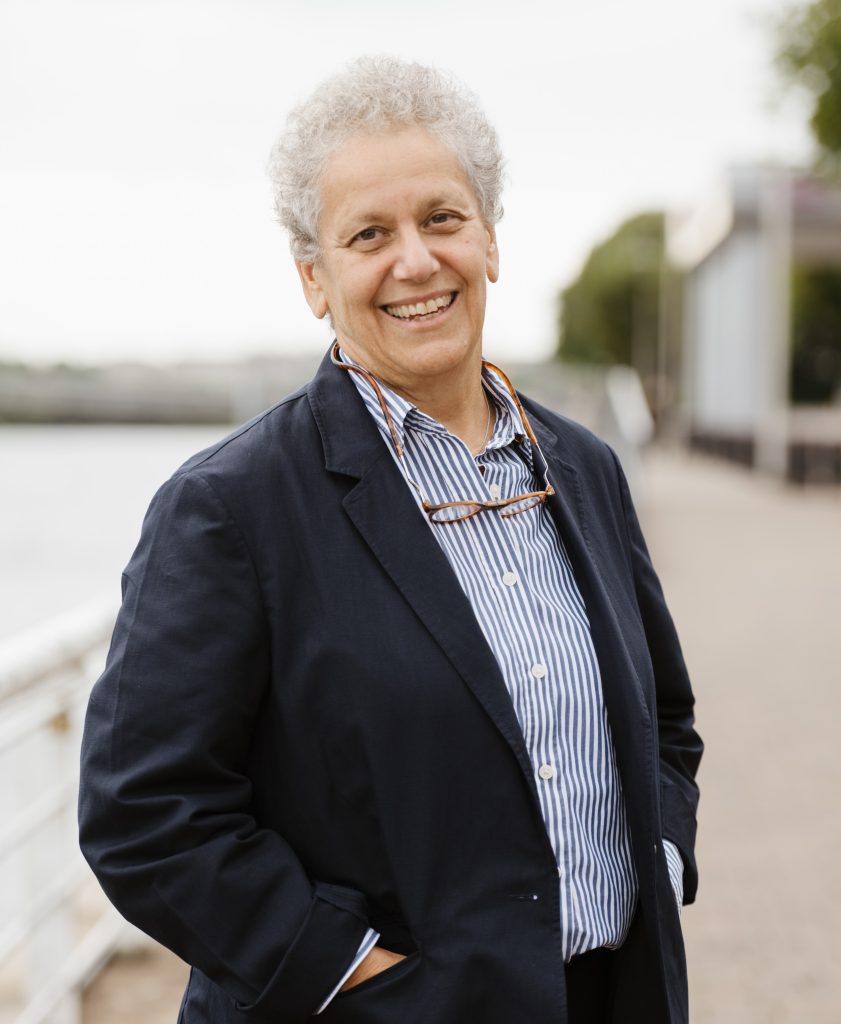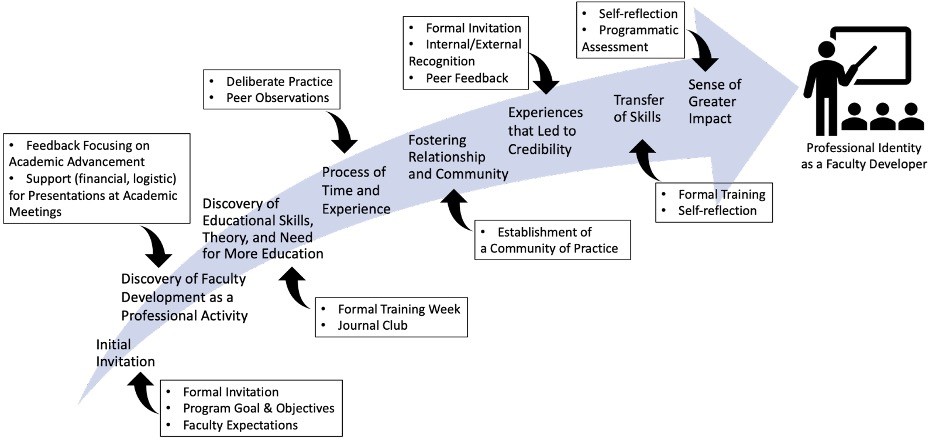#45 – Shaping Fac Dev Expertise, 8 steps at a time
Episode host: Linda Snell.

Photo: Erik Cronberg.
We have a personal identity. And a professional identity, or perhaps a few. And possibly a teacher identity. So, can we also have an identity as a faculty developer? And do we need one? How does it evolve… and how can we foster its development?
Episode article
Kiesow, C. W., Mount, G. R., Bunin, J., McMains, K. C., McFate, T., Hartzell, J., & Servey, J. T. (2024). A Common Trajectory Toward a Professional Identity as a Faculty Developer, Family medicine, 56(2), 108–114.
Episode notes
The following breakdown examines the key components of the study’s methodology and highlights the findings.
Background
Professional identity formation (PIF) is complex, and a critical process in health professions education (HPE), describing how individuals see themselves (and others see them) in a workplace setting, and how this evolves. PIF has 2 ‘parts’:
- the individual psychological development
- the collective socialization into one or multiple roles
One of these roles might be as a faculty developer. The authors describe this role as ‘delivering faculty development activities—[by] … actively fostering the PIF of academic faculty through active experiences, promoting reflection, and relationship building.‘ The faculty developer must be ‘skilled in educational methods and facilitation, encouraging reflection across a diverse set of faculty and specialties.’
In response to a demand for more FacDev, the authors’ institution instituted a ‘train-the-trainer’ (TTT) program to train a group of medical educators to serve as faculty developers, using a framework similar to the Stanford Faculty Development program.
The authors wanted to ‘examine the factors that influence the PIF of faculty developers’, to inform the creation of an environment to foster this. Their research question: Is there a common trajectory for faculty developers as their identity as a faculty developer evolves?
Method
They conducted semi-structured interviews with 17 out of 26 participants who were invited to the TTT (Train the Trainer) program. The interview guide was developed based on a prior study, although no additional details were provided.
They adopted a constructivist paradigm, grounded in theory, to explore and generate a new theoretical framework. Initially, they had hoped their interpretations would yield such a framework. However, upon reflection, “…we realized that our interpretations did not provide such a framework. Instead, we chose to focus our examination on the social and contextual factors of developing a professional.” This approach allowed them to build upon existing concepts related to professional identity in this field.
Our analysis employed thematic analysis as the primary method.
Lastly, they included a reflexivity statement to acknowledge their perspectives and potential biases during the research process.
Results/Findings
8 themes on a common trajectory of PIF as a faculty developer:
- Initial invitation, ‘hidden message – there’s something special about this training and process.’
- Discovery of faculty development as a distinct professional activity, little prior knowledge of FacDev or the skills needed
- Discovery of educational theory, skills, and need for more education, ‘growth opportunities’, need for an evidence base
- Time and experience needed to put these into practice, for PIF,
- Fostering relationship building (peer-peer) and joining a community, especially inter-specialty.
- Transfer of skills to professional and personal roles, e.g. communication, group facilitation, and administration transferred to being a more effective leader.
- Experiences that lead to internal credibility, and external validation
- Sense of greater impact on organization as well as individuals within it.
The authors looked at their FacDev TTT program through the lens of these themes allowed identification of programmatic elements to support faculty on their trajectory:

E.g., expanding the role of a faculty developer may enhance performance in other roles (e.g., clinicians, administrators, leaders, researchers). Programmatic elements to support skills transfer include formal training in facilitation and self-reflection.
Comments
Can the same comments be made about other education roles in the health professions? E.g., CPD professional.
Paper clip: If you are going to use interviews it would be nice to see the interview questions!

0 comments